Years active 1548–1589 | Name Christophe Plantin Net worth 135,718 florins | |
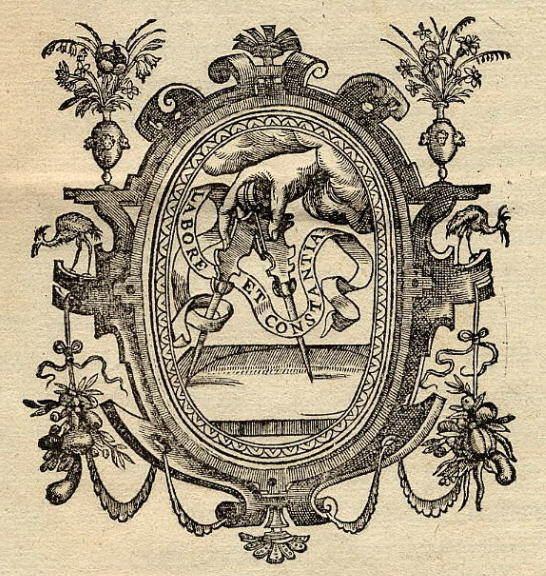 | ||
Books De Thesaurus Van Plantijn Van 1573 Similar People Jan Moretus, Abraham Ortelius, Peter Paul Rubens, Gerardus Mercator, Petrus Plancius | ||
Epitaphe de Christophe Plantin: Pleurez Muses (à 5)
Christophe Plantin (Dutch: Christoffel Plantijn; c. 1520 – 1 July 1589) was an influential Renaissance humanist and book printer and publisher.
Contents
- Epitaphe de Christophe Plantin Pleurez Muses 5
- La fte de lcole Christophe Plantin
- Life
- Printing work
- Legacy
- Family tree
- References
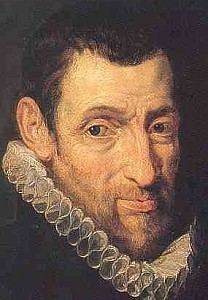
La fête de l'école Christophe Plantin
Life
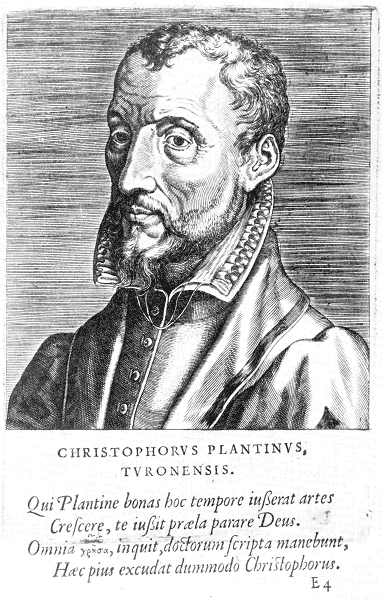
Plantin was born in France, probably in Saint-Avertin, near the city of Tours, Touraine. As a youth he apprenticed as a bookbinder in Caen and also married there. In 1545, he and his wife, Joanna Riviere, set-up shop in Paris, but after three years they chose to relocate to the booming commercial center of Antwerp, where Plantin became a free citizen and a member of the Guild of St Luke, the guild responsible for painters, sculptors, engravers and printers. The quality of his work as a bookbinder brought him into contact with nobility and wealth. While delivering a prestigious commission he was mistakenly attacked, receiving an arm wound that prevented him from labouring as a bookbinder and led him to concentrate on typography and printing. By 1555, he had his own printshop and was an accomplished printer. The first book he is known to have printed was La Institutione di una fanciulla nata nobilmente, by Giovanni Michele Bruto, with a French translation. This was soon followed by many other works in French and Latin, which in point of execution rivalled the best printing of his time. The art of engraving then flourished in the Netherlands, and Dutch engravers illustrated many of his editions.
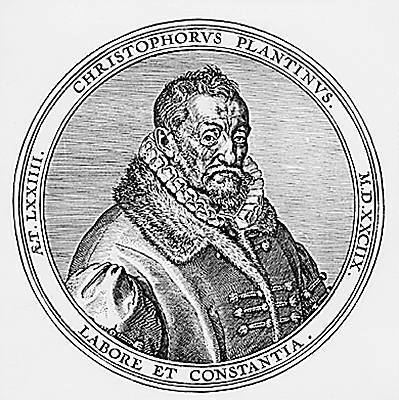
In 1562, while Plantin was absent in Paris, his workmen printed a heretical pamphlet, which resulted in his presses and goods being seized and sold. It seems, however, that he eventually recovered much of the value that was taken from him. With the help of four Antwerp merchants he was able to re-establish and expand his printing business significantly. Among these friends were two grand-nephews of Daniel Bomberg, who furnished him with the fine Hebrew typefaces of that renowned Venetian printer. This co-venture only lasted until 1567 however it enabled Plantin to acquire a house in the Hoogstraat which he named "De Gulden Passer" (The Golden Compass). This gesture mirrors the commercial success of publishing emblem books, which present collections of images paired with short, often cryptic, text explanations. It is also at this time that Plantin adopted a printer's mark which would appear in various forms on the title pages of all Plantin Press books. The motto Labore et Constantia ("By Labor and Constancy") surrounds the symbol of a compass held by a hand extending from a bank of clouds and inscribing a circle. The center point of the compass indicates constancy, the moving point which renders the circle is the labor. Plantin holds this instrument in portraits of him, such as the one commissioned from the Flemish painter Peter Paul Rubens.
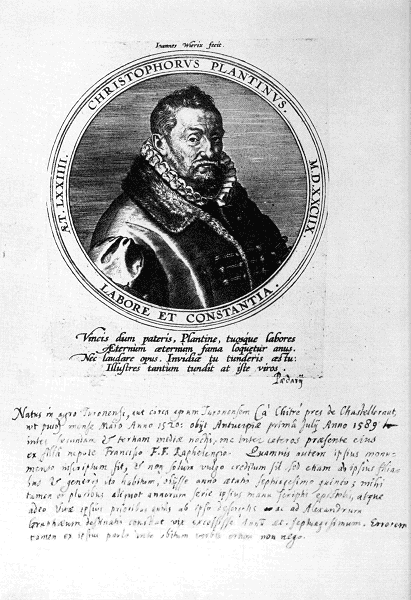
In November 1576, the Spaniards ruthlessly plundered and burned Antwerp — essentially ending its supremacy as the commercial center and richest city of Europe — and Plantin had to pay an exorbitant ransom to protect his printing works. He established a branch of his firm in Paris. In 1583, the states of Holland sought a typographer for the newly erected university at Leiden. Plantin moved there after leaving his much reduced business in Antwerp to his sons-in-law John Moerentorf and Frans van Ravelingen (Raphelengius). Plantin left his Leiden office to Raphelengius and returned to Antwerp after it became more settled, subsequent to its conquest by the prince of Parma in 1585. Plantin laboured in Antwerp until his death.
Printing work
Plantin was a prolific printer and prosperous entrepreneur, publishing more than 40 editions of emblem books. In contrast, his most important work is considered to be the Biblia Regia (King's Bible), also known as the Plantin Polyglot. In spite of clerical opposition, Plantin was encouraged by King Philip II of Spain, who sent him the learned Benito Arias Montano to lead the editorship. With Montano's zealous help, the work was finished in five years (1569–1573, 8 vols, folio). This work earned Plantin little profit, but resulted in Philip's granting him the privilege of printing all Roman Catholic liturgical books (missals, breviaries, etc.) for the states ruled by Philip, the title "Architypographus Regii," which he dutifully added to the title pages of Plantin Press books, and the unwanted duty of prototypo-graphus regius, obligating him to inspect and verify the skill and dogmatic adherence of other printers.
Besides the Plantin Polyglot, Plantin published many other works of note, such as the "Dictionarium Tetraglotton" of 1562, which was a dictionary in Greek, Latin, French and Flemish, editions of St. Augustine and St. Jerome, the botanical works of Dodonaeus, Clusius and Lobelius, and the description of the Netherlands by Guicciardini. His editions of the Bible in Hebrew, Latin and Dutch, his Corpus juris, Latin and Greek classics, and many other works are renowned for their beautiful execution and accuracy. A skillful businessman, by 1575 his printing firm reckoned more than 20 presses and 73 workmen, plus various specialists who did job-work out of their homes. The vast collection of handwritten ledgers and letters of the Officina Plantiniana, as it was known, can be examined online following digitization by the Museum Plantin-Moretus and hosting by World Digital Library.
Though outwardly a faithful member of the Catholic Church, he appears to have used his resources to support several sects of Protestant heretics, sometimes known as the Family of Love or Familists. It is now proven that many of their books, published without naming the printer, came from Plantin Press.
Legacy
After Plantin's death, his firm was taken over by his son-in-law, Jan Moretus. Today, the building that housed the firm is called the Plantin-Moretus Museum. Moretus and his descendants continued to print many works of note in officina Plantiniana, but the firm began to decline in the second half of the 17th century. It remained, however, in the possession of the Moretus family, which left everything in the office untouched, and when the city of Antwerp acquired (for 1.2 million francs) the old buildings with all their contents, the authorities created, with little trouble, the Musee Plantin, which opened on 19 August 1877.
In 1968, the Christophe Plantin Prize was created in his memory, given to a Belgian civilian who resides abroad, who has made significant contributions to cultural, artistic or scientific activities.
Family tree
Plantin-Moretus family tree (successive heads of the main Plantin-Moretus firm in bold).
Christophe Plantin (1520–1589) married Joanna Riviere; they had five daughters and a son
